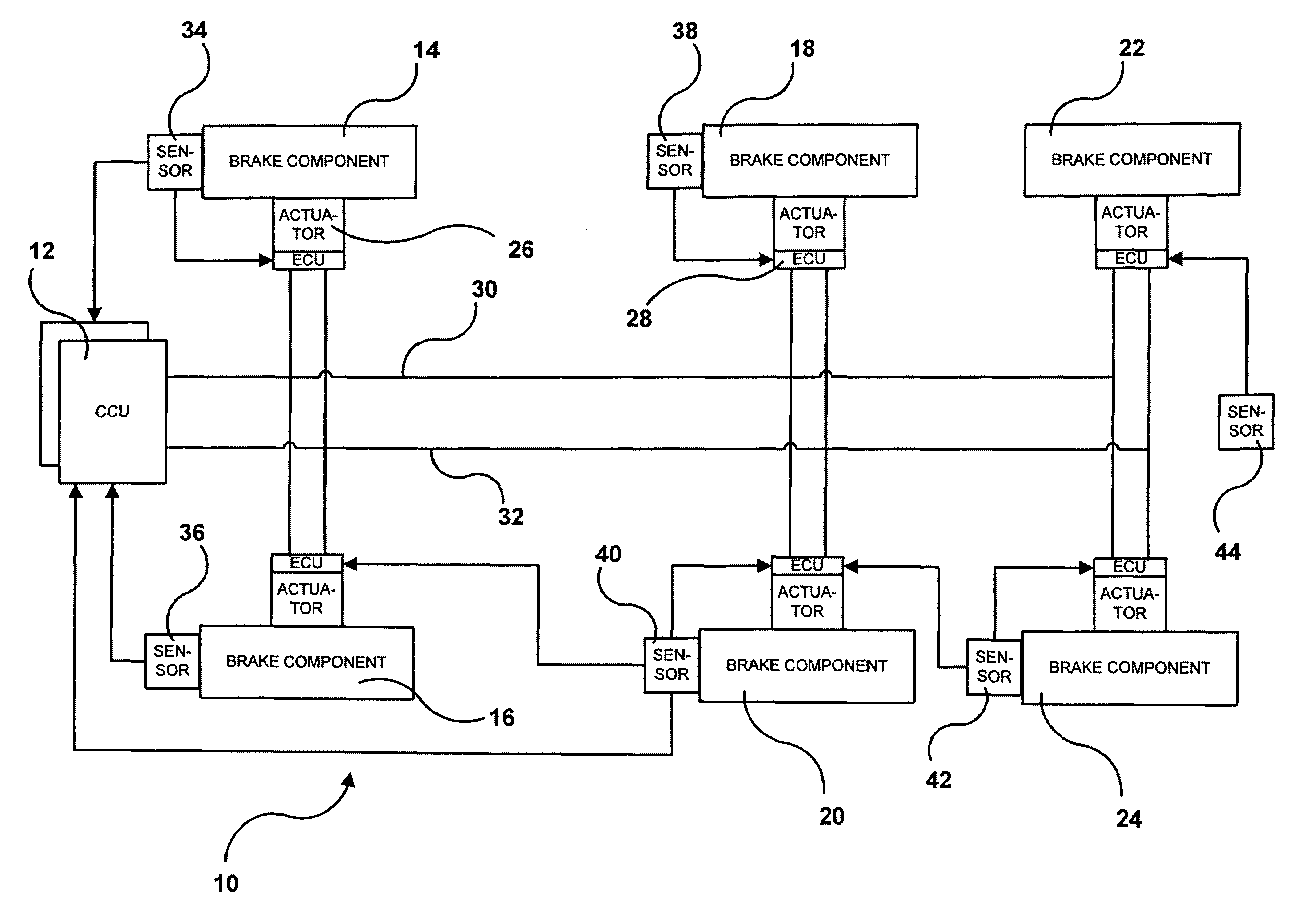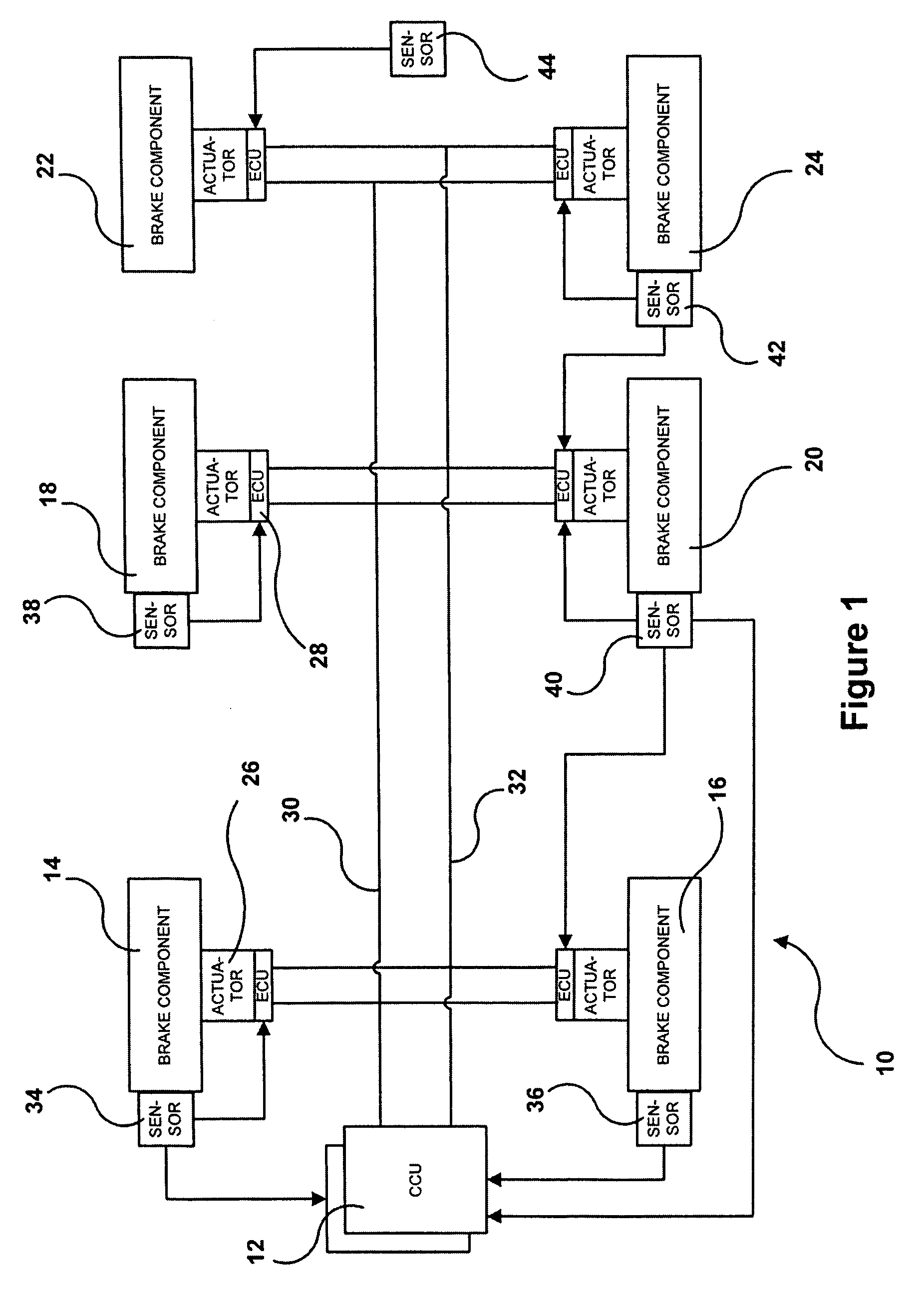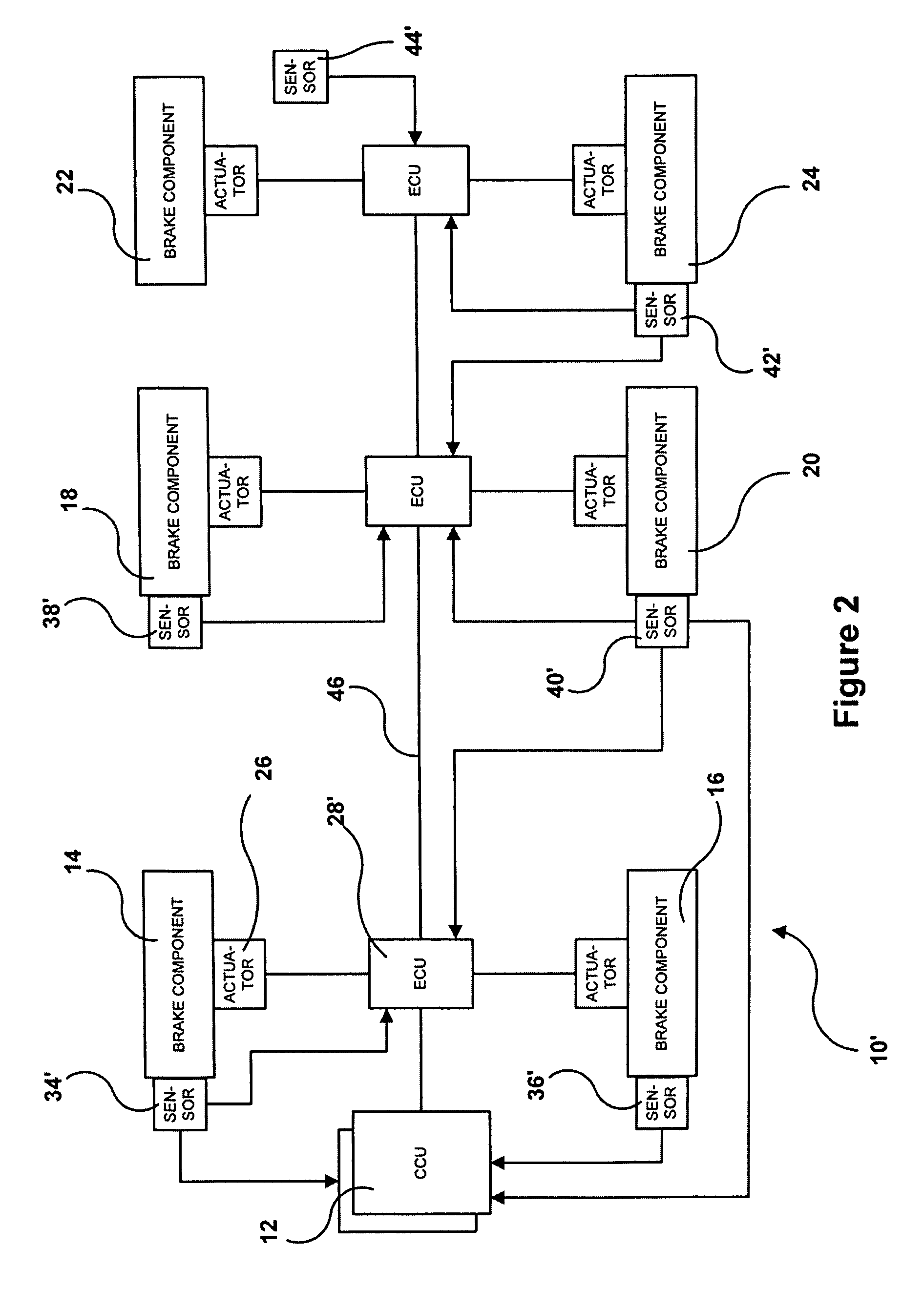Brake system with distributed electronic control units incorporating failsafe mode
a distributed electronic control and brake system technology, applied in the direction of braking components, computation using non-denominational number representation, process and machine control, etc., can solve the problems of essentially “, all three above-discussed prior art systems suffer from a number, and the functionality of this electronic control unit is limited, so as to respond to sensor input relatively quickly and free up resources
- Summary
- Abstract
- Description
- Claims
- Application Information
AI Technical Summary
Benefits of technology
Problems solved by technology
Method used
Image
Examples
Embodiment Construction
[0037]Referring first to FIG. 1, an electrically controlled braking system 10 in accordance with the present invention is shown. Braking system 10 includes at least one central control unit 12 which generates central control signals. Braking system 10 also includes a plurality of brake components 14, 16, 18, 20, 22, 24. While six brake components 14, 16, 18, 20, 22, 24 are shown in FIG. 1, it should be understood that braking system 10 may include a greater or lesser number of brake components.
[0038]Each of brake components 14, 16, 18, 20, 22, 24 is responsive to the central control signals generated by control unit(s) 12. More particularly, each of brake components 14, 16, 18, 20, 22, 24 includes a brake actuator 26 incorporating a distributed electronic control unit 28 which distributed electronic control unit 28 causes brake actuator 26 to operate in response to the central control signals generated by central control unit(s) 12. As this central control aspect of such electronica...
PUM
 Login to View More
Login to View More Abstract
Description
Claims
Application Information
 Login to View More
Login to View More - R&D
- Intellectual Property
- Life Sciences
- Materials
- Tech Scout
- Unparalleled Data Quality
- Higher Quality Content
- 60% Fewer Hallucinations
Browse by: Latest US Patents, China's latest patents, Technical Efficacy Thesaurus, Application Domain, Technology Topic, Popular Technical Reports.
© 2025 PatSnap. All rights reserved.Legal|Privacy policy|Modern Slavery Act Transparency Statement|Sitemap|About US| Contact US: help@patsnap.com



